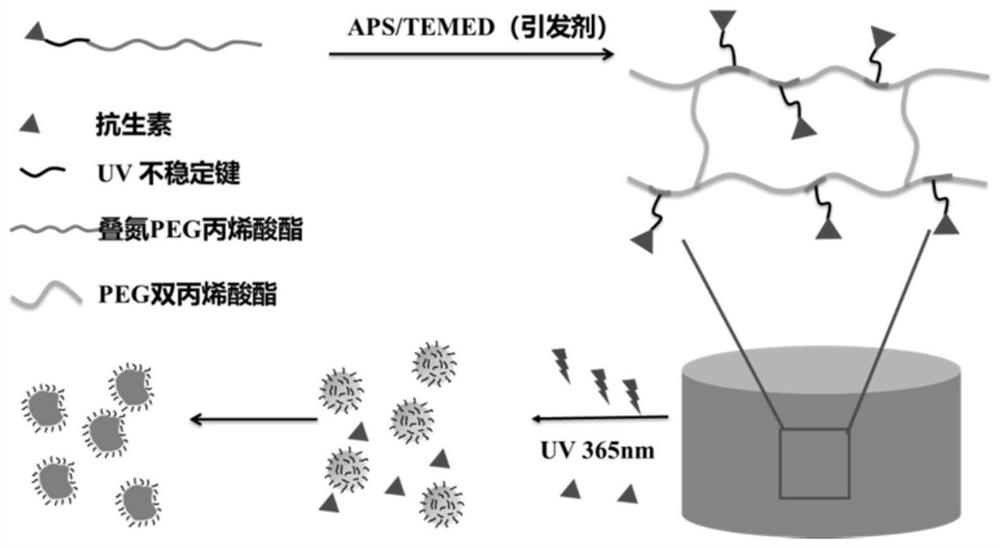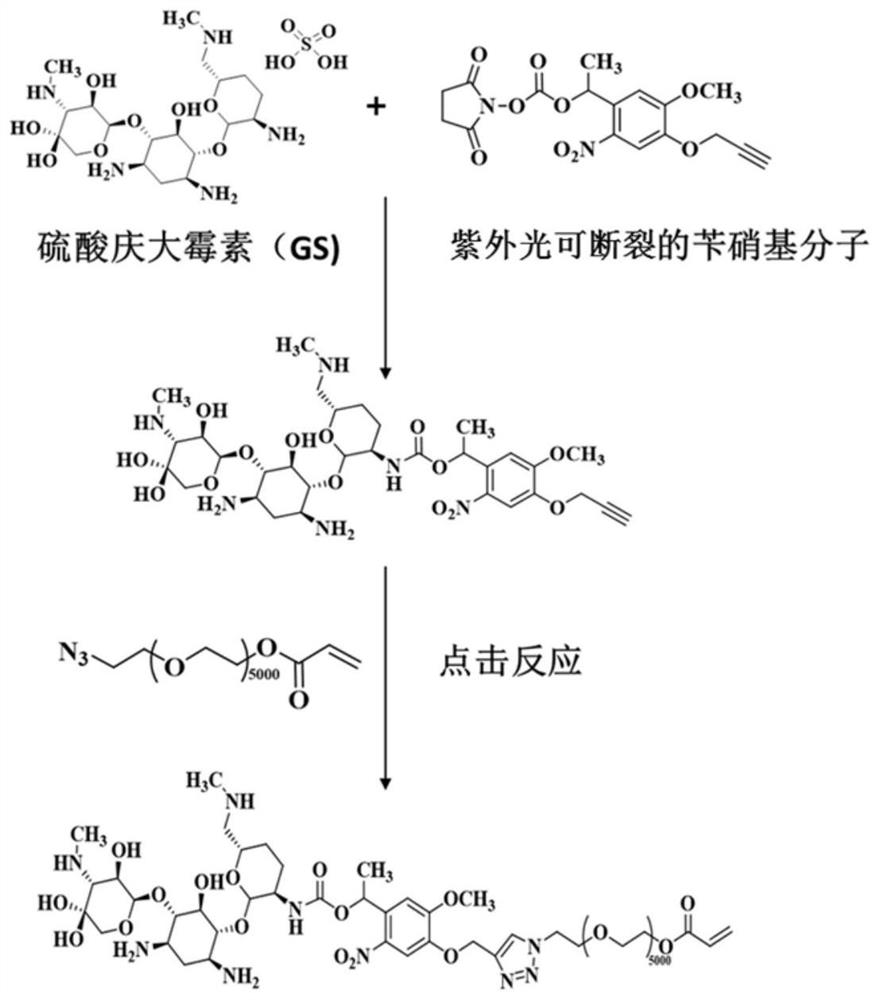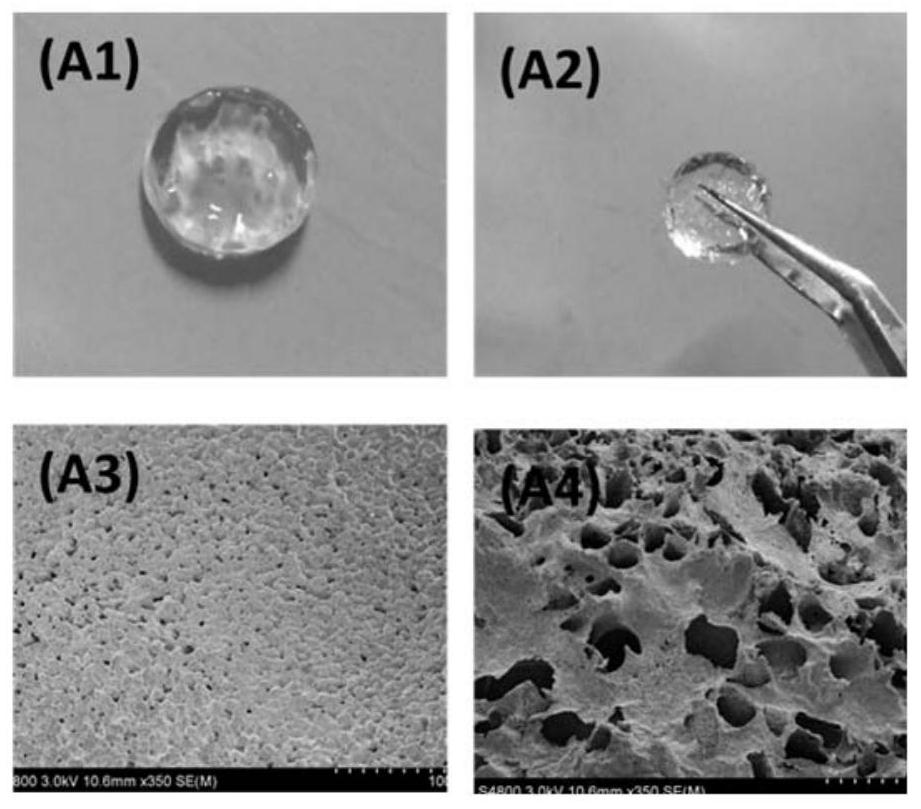A kind of photosensitive polyethylene glycol-based antibacterial hydrogel dressing and preparation method thereof
A polyethylene glycol-based, polyethylene glycol acrylate technology is applied in the field of photosensitive polyethylene glycol-based antibacterial hydrogel dressings and the preparation thereof, which can solve the problems such as the lack of research on antibiotics, and achieve good antibacterial properties. Effect
- Summary
- Abstract
- Description
- Claims
- Application Information
AI Technical Summary
Problems solved by technology
Method used
Image
Examples
example 1
[0024] a) Synthesis of UV-cleavable benzylnitro molecules
[0025] Step 1: Dissolve 0.5g (2.36mmol) of 4-hydroxy-5-methoxy-o-nitroacetophenone and 0.476g (3.44mmol) of potassium carbonate in 25mL of anhydrous acetonitrile (calcium hydride to remove water first) and mix , add 0.28ml (3.64mmol) 3-bromopropyne, reflux reaction under nitrogen atmosphere at 100℃ for 3h, concentrate the reaction solution by rotary evaporation, add 50mL water and 5mL 2M HCl to dissolve, and extract 3 times with 3*50mL chloroform , the organic layer was obtained, dried with magnesium sulfate, filtered, and dried under reduced pressure to obtain a yellowish solid.
[0026] Step 2: Dissolve 0.57g of the product from the previous step in 20ml of tetrahydrofuran and 40ml of methanol mixed solvent, add 0.69g (13.728mmol) of sodium borohydride, stir for 3 hours in an ice bath, and concentrate the reaction solution by rotary evaporation, then add 50mL of water and 5 mL of 2M HCl, extracted three times with ...
example 2
[0034] Preparation of photosensitive polyethylene glycol-based antibacterial hydrogel dressing (25%)
[0035] 200mg of polyethylene glycol acrylate (150mg of unmodified polyethylene glycol acrylate + 50mg of modified polyethylene glycol acrylate) was dissolved in 1ml of PBS, 50mg of cross-linking agent polyethylene glycol diacrylate was added, and then Mix 50 μl APS (100 mg / ml) and 50 μl TEMED (8 mg / ml) evenly and heat at 90°C for 30 minutes to form a gel. Rinse repeatedly with PBS to remove excess initiator for later use.
example 3
[0037] Preparation of photosensitive polyethylene glycol-based antibacterial hydrogel dressing (75%)
[0038]200mg of polyethylene glycol acrylate (150mg of unmodified polyethylene glycol acrylate + 50mg of modified polyethylene glycol acrylate) was dissolved in 1ml of PBS, and 150mg of cross-linking agent polyethylene glycol diacrylate was added, and then Add 70 μl APS (100 mg / ml) and 70 μl TEMED (8 mg / ml), mix the solution evenly and heat at 90° C. for 30 minutes to form a gel. Rinse repeatedly with PBS to remove excess initiator for later use.
PUM
 Login to View More
Login to View More Abstract
Description
Claims
Application Information
 Login to View More
Login to View More - R&D
- Intellectual Property
- Life Sciences
- Materials
- Tech Scout
- Unparalleled Data Quality
- Higher Quality Content
- 60% Fewer Hallucinations
Browse by: Latest US Patents, China's latest patents, Technical Efficacy Thesaurus, Application Domain, Technology Topic, Popular Technical Reports.
© 2025 PatSnap. All rights reserved.Legal|Privacy policy|Modern Slavery Act Transparency Statement|Sitemap|About US| Contact US: help@patsnap.com



